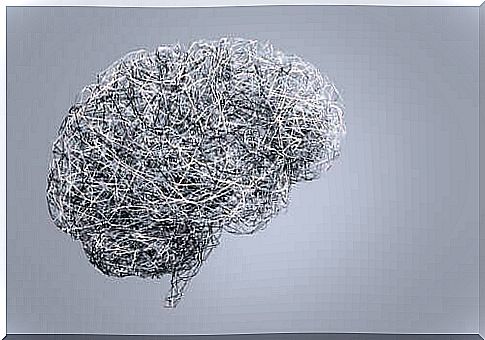The Fascinating Experiment With The Stimoceiver Chip

The experiments performed with the stimoceiver chip are some of the most controversial neuroscientific experiments of all time. However, they are also quite fascinating. They were carried out by the Spanish researcher José Manuel Rodríguez Delgado. He implanted a device of his own invention in the brains of animals to control their behavior.
Simply put, this chip allows a person to direct the behavior or behavior of biological organisms at a distance. It is like a remote control, when activated, it will cause electrical stimuli in certain areas of the brain. It makes an animal or human act in very specific ways.
José Manuel Rodríguez Delgado was heavily criticized for his invention, although his goal was to promote the understanding of our brain, and to open a way to rehabilitate some of its functions. Some speculated that what he was really looking for was an apparatus for manipulating someone’s mind, and controlling or conditioning an individual’s behavior.
The experiment with the stimoceiver chip
After creating the stimoceiver chip, Dr. Rodríguez Delgado conducted an experiment that guaranteed his worldwide recognition. The experiment took place in May 1965, in Córdoba, Spain. Rodríguez chose a bullring as the place where he would start testing the new device.
The bullring was small, and there were only a dozen witnesses at most. He had chosen an ox named Lucero for the experiment with the stimoceiver chip. Witnesses claim that several bullfighters began to annoy the bull by swinging their coats in front of it, while the researcher waited behind a safety barrier.
Then the doctor came out on the field, quite well dressed in a shirt and tie with only a remote control in his hands. He approached the bull slowly and carefully, and when he finally discovered the bull, it ran towards him at full speed.
When the bull was close enough, the researcher activated the remote control. It sent an electric shock, directly to the bull’s brain, and it stopped immediately. That same month, May 23, Dr. Rodríguez Delgado was, of course, on the front page of the New York Times . Everyone now knew that it was possible to control someone’s brain.
The inventor behind the stimoceiver chip
Dr. Jose Manuel Rodríguez Delgado was a fellow at Yale University from 1946. In 1950, in response to an invitation from researcher John Fulton, he began working at the university’s physiology department. A decade later, he was already testing his new stimoceiver chip.
He conducted his first experiments on cats, and then on monkeys. Witnesses say Rodríguez turned them into thoughtless creatures who did everything he asked. It was later, during the experiment in Córdoba, that the world could appreciate his incredible breakthrough.
Delgado pointed out that it was possible to produce targeted radio stimulation in the brain, especially in the hippocampus. To do this, he implanted a small radio transmitter in a brain that could then be manipulated with a remote control. It’s all pretty simple, yet so complicated.
Testing on animals and humans
The first time Dr. Rodríguez Delgado spoke about the possibilities for external control of other individuals’ behavior was in the late 1940s. Later he had the opportunity to go to Hall’s Island, in Bermuda.
There he managed to implant small stimoceiver chips in the brains of a whole group of gibbons, a species of small monkey. Shortly afterwards, he managed to control the behavior of these animals, to the point where several of them even rebelled against the alpha males. This is something that would never have happened naturally.
Then in 1952 he began experimenting with humans. His subjects were psychiatric patients from Rhode Island Hospital in Massachusetts. He justified this choice by saying that he only experimented on patients who could not be further helped by science.
The controversial stimoceiver chip

Most of the experiments performed with the stimoceiver chip were listed in the book Physical Control of the Mind: Toward a Psychocivilized Society , published by Dr. Rodríguez Delgado in 1969. In this book he mentions 25 implants made on humans, most of them in people suffering from schizophrenia and epilepsy.
He pointed out that radio transmitters could remain in the brain for as long as someone lived, and that he was able to generate several states and emotions, such as joy, deep concentration and extreme relaxation.
In retrospect, he has been accused of being part of the CIA’s agenda to control the human mind, also known as Project MKUltra. However, no one knows if the claims are true or not. But what we do know is that the stimoceiver chip acted as a precursor to other devices that are now in their own testing phases.
There are hopes that such devices could possibly improve conditions that occur due to Parkinson’s disease and obsessive-compulsive disorder (OCD).









